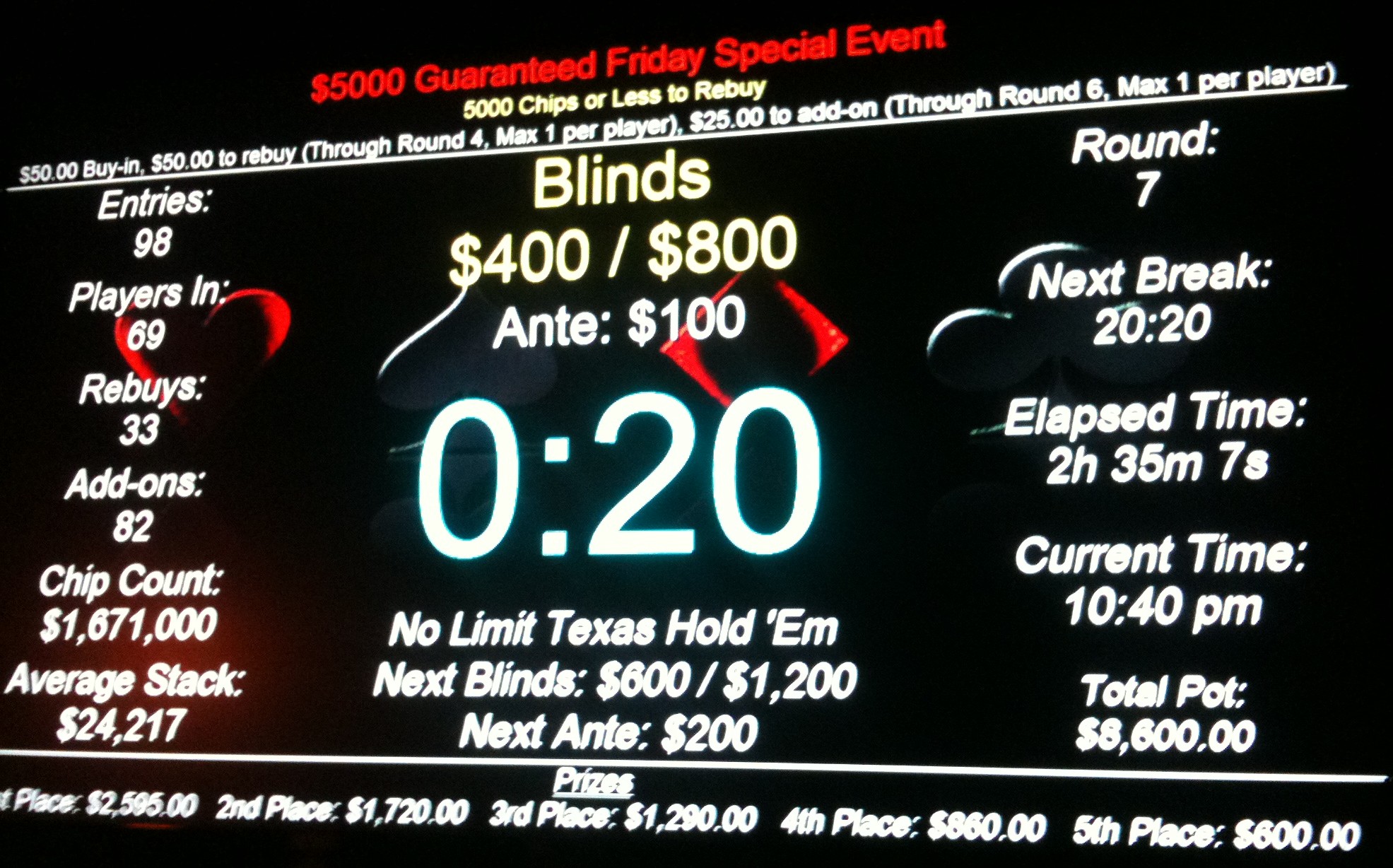Encore Club $5,000 Guaranteed Friday Special Event
While I was parking, I ran into DM from my cash in the August Tournament of Champions and the most recent $25K Guarantee. We exchanged pleasantries but he didn’t seem to remember my propensity for calling, which proved to my advantage early on when he was sat down on the far end of the same table I was seated on.
I’d made a few chips on my first hand at the table (I’d missed the first couple of hands), then called DM down through bets that increased to 1,900 each by the turn with my [4h 7h] flush draw. I got the heart I needed on the river and called his all-in, killing his two pair and forcing him to rebuy. I could hear him muttering for a while.
Another flush draw with [9c tc] cost me all I’d gained and then some, dropping me to 8,650, a few hundred below starting stack.
On my SB at 100/200, though, I was looking at [ax ax] and six calls ahead of me. I raised to 1,000, got re-raised to 2,500, four-bet to 5,000 (with just 3,800 behind) and got called. The [kx 5x kx] flop was scary, but I pushed the rest in and got called by [ax 6x] to double back up to 17,650.
[9x 9x] and I re-raised after the [3x 3x 5x] flop from 1,100 to 2,200, but laid down to am all-in of 5,600. He showed [qx qx].
It was a pocket pairs kind of night for me (although they didn’t mostly pan out). I paid 1,000 with [5x 5x] to see a flop of [2x kx qx], then lost another 1,400 fishing for a set with [3x 3x] when the board went [7x qx 7x qx]. Nothing I could do with that.
Before the add-on at the break I was still at 17,525.
I lost less than I might have with [ks 4s] on a [7x 4x 7x 4x kx] board when someone else’s pocket [7x 7x] came a’calling. I don’t know why they didn’t make their bet bigger, I’m fairly certain I might have gone all-in with a full house, but as it was I still had 16,775 in chips.
[qs 7s] made top pair on the flop and won for me, then I finally made [3x 3x] work for me when I raised to 1,500 before a [9x 9x qx] flop. WIth three clubs by the turn, a bet of 2,500 won the hand for me and I was up to 21,300.
I don’t remember if I called or shoved with [jx jx], but I lost a race against [ax kx] and got knocked down to 3,000. I won a race of my own with the Mutant Jack [ac jc] against [6x 6x] to put me back up to 8,400, but with just a little over 10bb I shoved with [qh th] and got called by [ax kx], which knocked me out finally.
Two hours and thirty minutes. -100% ROI. 69th of 98 players.

